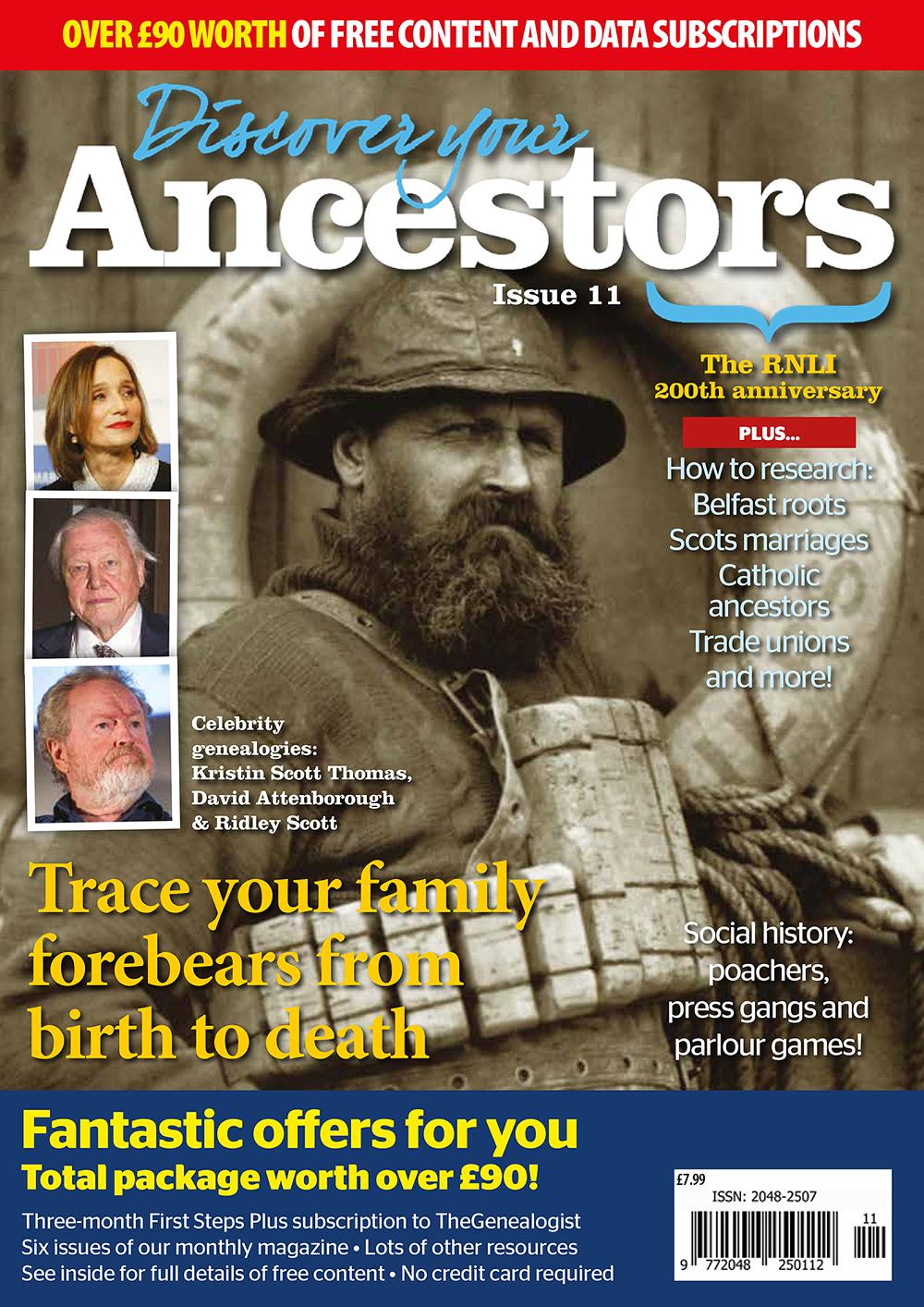Ruth A Symes explores the personal touches left behind by our ancestors in the form of graffiti

We tend to investigate the lives of our ancestors through conventional written records, both public and private, but further evidence of their existence might sometimes be found etched on to aspects of the natural world (rocks and trees) as well as physical objects such as desks, doorposts, lintels, church pews, beds and windowsills (to name just the most obvious). These very tangible signs of generations gone by can better be analysed with some understanding of their context.
Some ancestral graffiti has a long history. The walls of the Beauchamp Tower at the Tower of London, for example, are awash with names and dates scratched there by prisoners of the Tudor period, Some inmates went so far as to engrave significant lines of poetry in Latin and English as an act of rebellion (or even as a sort of permanent memorial to themselves if they were about to be hanged). And across the country, the wood and stonework of chapels and churches – such as the windowsills of the Nailsworth Quaker Meeting House in the Cotswolds – bear the drawings and names of members of congregations from as early as the medieval period.
More recent graffiti may date back to the Victorian period and early 20th century when, many of our newly literate ancestors – those from the lowest levels of society who had benefited from the Education Act of 1870 and could now write their names, including many workmen, soldiers, servants and schoolchildren – all frequently carved their signatures and other aspects of their identity into whatever came to hand.
Soldiers
British soldiers in Northern France in World War One often scratched their names, the date and their country of origin into the bark of trees as they waited for battle. There are so many examples of these wartime 'arborglyphs' that they have become the subject of academic study by Chantelle Summerfield of Bristol University. She has catalogued thousands of carvings made by WW1 soldiers, finding initials, names, dates, place names and occasionally entire messages, and noting that far more personal information was recorded in France as the soldiers neared actual military engagement than at the institutions in Britain where they had previously been stationed.
Comparing the tree-graffiti with military records, censuses and information from the Commonwealth War Graves Commission, Summerfield has been able to recreate the wartime stories of some soldiers who would otherwise have been virtually lost to history. One WW2 carving in Northern France read 'Frank Fearing – Hudson, Massachusetts, 1945', and was followed by a love heart and the name 'Helen'. From this fairly full information, Summerfield was able to trace Frank – a GI – back to America (he had unfortunately already died), but she was able to meet the elderly Helen Fearing (whom Frank had married secretly before going abroad) and to show her a photograph of the tree upon which Frank had carved their names.
Daytrippers
People living in the British Isles from the Bronze Age onwards have carved patterns (called 'petroglyphs') into stone, but in the Victorian and Edwardian periods some of these areas received a new layer of graffiti (mainly names and dates) from daytrippers keen to register their names in the sandstone. Good examples can be found on the hillside path between Dunsdale Hollow and Frodsham Hill (Cheshire) and at Ash Fell (near to Ravenstonedale, Cumbria). There is no more interesting petroglyph, however, than that at Dwarfie Stane, a chambered tomb on the island of Hoy, Orkney, where in 1850 Major William H Mounsey (1808-77), a former British spy in Persia (and known eccentric), wrote his name backwards in Latin together with an inscription in Persian which read, 'I have sat two nights and so learnt patience.'
Tradesmen
If your ancestor was a tradesman of some sort, there is a possibility he might have scratched his name into a building that he constructed, painted or repaired. Some of these names have come to light as a result of 20th and 21st century restoration work. In 2013, for example, as repair work was being carried out on the roof of the Oxford Museum of Natural History, a message was found (painted 49 feet up in the rafters) which read, 'This roof was painted by G Thicke and J Randall, April 1864.'
Two other forgotten workmen were briefly brought back to life by their signatures 'Robert Robson' and 'John Milbanke' written in pencil on the timbers of a bookcase in the Monks' Dormitory in Durham Cathedral (during the Cathedral's Open Treasure renovation in 2014). Together with a couple of newspapers dated 1880, found underneath the bookcase, this information was enough to identify Milbanke as a Durham builder and Robson as a carpenter and builder who employed 21 people and who later twice became Mayor of Durham. Robson's great-great-grandson was contacted and the ancestral connection made.
With 'back stories' such as these, historical graffiti can give a fascinating insight into our ancestors' lives. So perhaps next time we encounter some we should check our outrage at an object defaced and instead consider why some of our ancestors felt so compelled to leave a lasting mark.
From our August 2015 issue (full contents here)

RUTH A SYMES (www.searchmyancestry.blogspot.co.uk) is a freelance writer and historian. Her latest book, Family First: Tracing Relationships in the Past, was recently published by Pen & Sword.
Subscribe Now!

Issue 11 of the critically acclaimed annual printed magazine Discover Your Ancestors is now available, featuring more than 140 pages of beautifully illustrated content to move your family history research on at pace. Read stunning features about life in the past, celebrity genealogies, Belfast roots, Scots marriages, trade unions, Catholic ancestors, and much more, delivered straight to your door.
Issue 11 is now available at this website and at more than 4,000 newsagents worldwide including WHSmith in the UK, Barnes & Noble in the USA and Chapters in Canada. While stocks last you can also purchase copies of back issues direct from this website.
Order Your Copy Today!You will be taken to our partner site GenealogySupplies.com to complete your order.